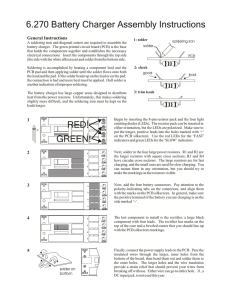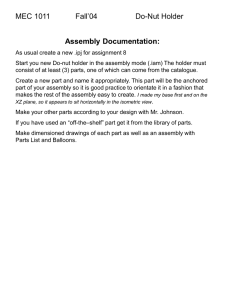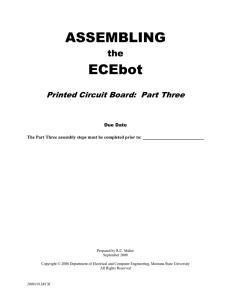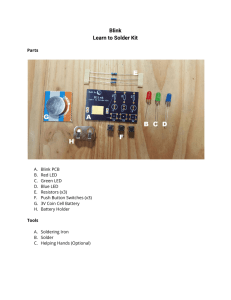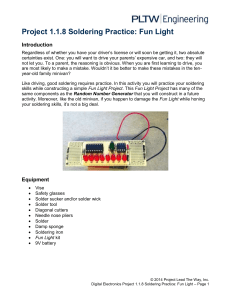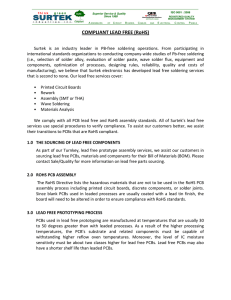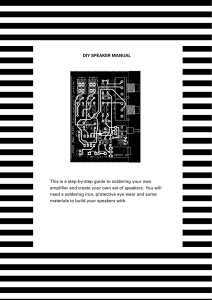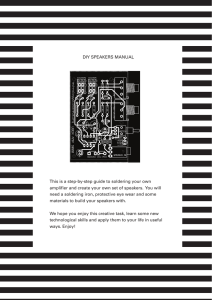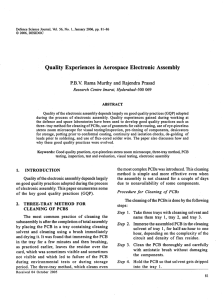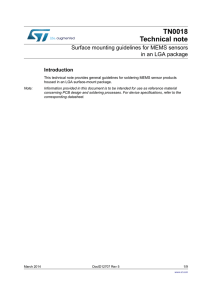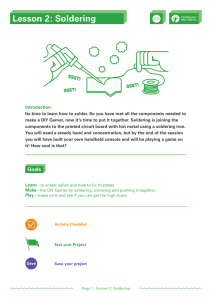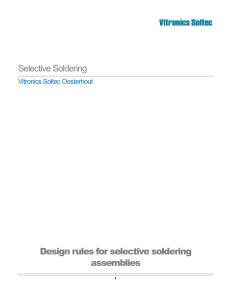Assembly Instructions v3.914
advertisement
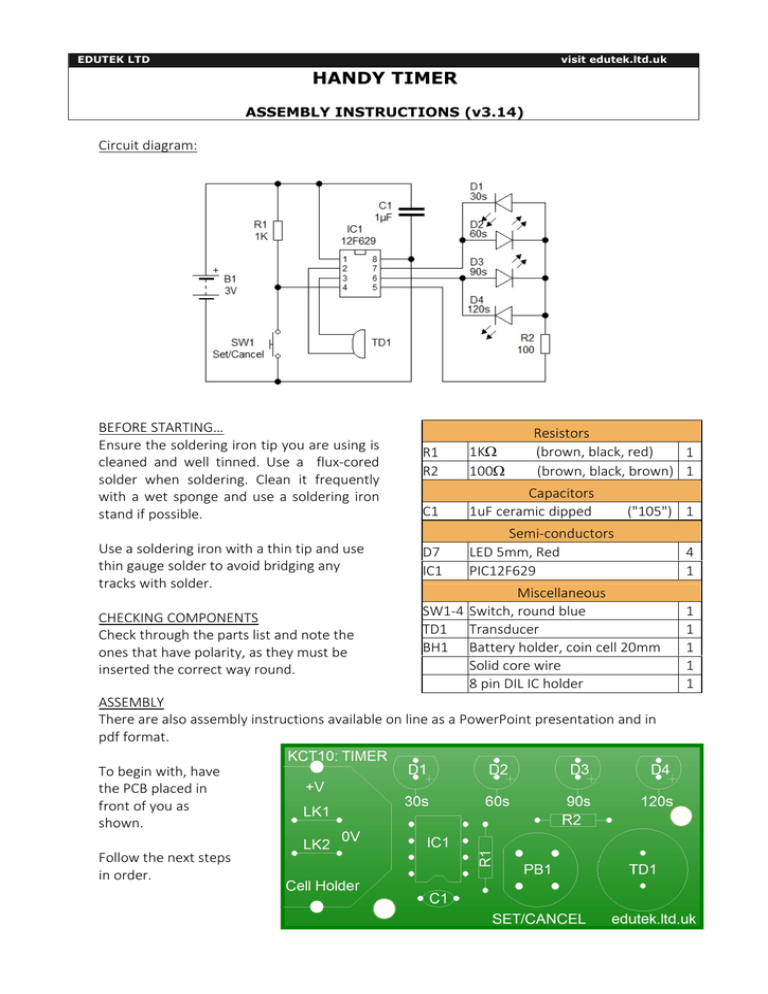
EDUTEK LTD visit edutek.ltd.uk HANDY TIMER ASSEMBLY INSTRUCTIONS (v3.14) Circuit diagram: BEFORE STARTING… Ensure the soldering iron tip you are using is cleaned and well tinned. Use a flux-cored solder when soldering. Clean it frequently with a wet sponge and use a soldering iron stand if possible. Use a soldering iron with a thin tip and use thin gauge solder to avoid bridging any tracks with solder. CHECKING COMPONENTS Check through the parts list and note the ones that have polarity, as they must be inserted the correct way round. Resistors (brown, black, red) 1 (brown, black, brown) 1 R1 R2 1KΩ 100Ω C1 Capacitors 1uF ceramic dipped D7 IC1 Semi-conductors LED 5mm, Red PIC12F629 4 1 Miscellaneous SW1-4 Switch, round blue TD1 Transducer BH1 Battery holder, coin cell 20mm Solid core wire 8 pin DIL IC holder 1 1 1 1 1 ("105") 1 ASSEMBLY There are also assembly instructions available on line as a PowerPoint presentation and in pdf format. To begin with, have the PCB placed in front of you as shown. Follow the next steps in order. WIRE LINKS Shape 2 pieces of solid core wire to fit LK1 and LK2. When they are soldered, push them flat against the PCB It doesn't matter if they are a little bend or crooked, as long as they are flat. BATTERY HOLDER This has two tags that fit into the PCB as shown. Ensure it is pushed into the PCB fully and solder the tags to the PCB. RESISTORS Shape the wires and insert the resistors R1 and R2. Each can go in either way round. R1 = 1K ohms: (brown, black, red) R2 = 100 ohms (brown, black, brown) IC HOLDER It is not essential, but try to ensure the notch on the IC holder is facing downwards. The IC holder has very short legs. To keep it in place while soldering,, bend the legs over in two opposite corners. CAPACITOR This is a non-polarised type so can be inserted either way round. (may also be blue in colour) TRANSDUCER This is the device that produces sound. It can be inserted either way round. PUSH SWITCH The push switch has a flat section on the side. This flat section must face left, towards R1. LED's There are 4 LED's which must be soldered the correct way round, with the positive (long leg) in the lower of the two holes. There is also a flat section denoting the negative. To keep the LED's evenly away from the PCB while soldering, use a 6-7mm spacer through the legs of each LED. INTEGRATED CIRCUIT Finally insert the IC itself. Make sure that all the legs go into the holder and that the notch is facing downwards. OPERATION Insert a 20mm 3v button cell into the battery holder with the positive (metal case) facing upwards. Try not to push it too far in as it can be stiff to remove. The Timer should play a quick tune and chase the LED's. It will then go to sleep (shut down to stand-by mode). In this mode it uses very little power and extends the battery life considerably. To set the time, press the button once for every 30 seconds required. During timing, every 30 seconds the LED's will count down (if less than 2 minutes) and the timer will beep. When timing has finished, it will play a brief tune, flash the LED's and then go to sleep.. To cancel timing, pause until the LED's stop flashing, then press the button again. This will cancel the timer and send it back to sleep. The maximum length of time that can be set is 5 minutes - 10 presses. If the unit fails to work, try the following. • Check LED's are in the correct way round. • Check IC and battery are in the correct way round. • Look for short circuits between pads and remove any excess solder For further details please go to www.edutek.ltd.uk/projects
